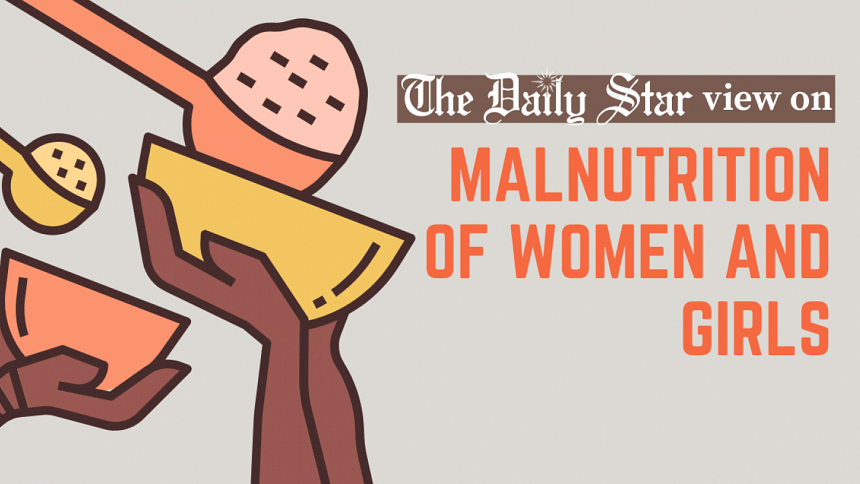Malnourished women, malnourished nation

It is an alarming revelation that about 1.7 crore women, aged 15-49 years, suffer from nutrition deficiency in the country. A recent study points out that, despite the gains made over the past decade as far as women's empowerment is concerned, women and girls' nutritional status is yet to improve.
Malnourishment in women of reproductive age groups has been a persistent problem in Bangladesh, which has its roots in the patriarchal family structure. In an overwhelming majority of families, particularly in the villages, a boy child receives preferential treatment, including the tastiest and most nutritious food, while the girl must make do with the leftovers. As she grows older, she learns to repress her own needs, being the last to eat after everyone else has been fed. Traditionally, malnourished girls as young as 12-14 are forced into marriage by their parents. These victims of child marriage in turn give birth to babies with low birth weight (LBW) who suffer from various illnesses since birth. Thus, the cycle continues.
The study also highlights another condition affecting an increasing number of women: Obesity. The proportion of overweight women has increased from 12 percent to 32 percent over the last decade, and it is estimated that if the trend persists, about 46 percent of married women of reproductive age will be overweight by 2030. However, this new phenomenon, which is equally affecting mothers and children and thereby creating an "inter-generational challenge", is yet be addressed by the country's maternal and child health programmes and policies.
Public health experts appear to be handling a double-edged sword at the moment. Women with nutritional deficiency are less immune and thus more prone to suffer from different infectious diseases, while obese women are at higher risk to develop non-communicable diseases such as diabetes, hypertension, coronary heart disease and cancers. Effects of malnutrition are further devastating for women because it not only affects their own health but also increase the risk factors for infant survival, growth, and overall development.
What is particularly challenging for public health experts is that they must undertake different strategies to address undernutrition and overnutrition, as interventions for one may exacerbate the other. To address undernutrition, we need to raise awareness within families about its devastating impacts, ensure low-cost food options for low-income households, and ensure nutrition-related support at healthcare facilities, among other interventions. To address obesity, we need to promote healthy lifestyles, regulate marketing of packaged foods and beverages and provide healthy meal options at schools and workplaces.

 For all latest news, follow The Daily Star's Google News channel.
For all latest news, follow The Daily Star's Google News channel. 





Comments